Notable Christians: Count Zinzendorf
This piece is as much about the Moravian church as it is about Count Nikolaus Ludwig von Zinzendorf, its founder. Both have secured a place not only in church history but secular history as well. Surprisingly, however, there has been little written about Zinzendorf in English for quite some time. The main biography to appear in English during the past half century is Phil Anderson’s The Lord of the Ring (Regal, 2007).
Zinzendorf (1700-1760) is most noted for founding the Moravian renewal movement in the eighteenth century, and igniting the fire for world missions. His impact is still felt today, and all believers need to know something about this amazing figure.
He was born into an aristocratic family in Austria, and eventually followed his father in engaging in government work, including providing legal counsel to the king at Dresden. But he was spiritually nurtured early on by the Lutheran Pietists, and his concerns for Christ and the Kingdom soon took priority.
While a student at Halle he formed an accountability group with five others called the “Slaves of Virtue”. Around 1716 he formed a religious order, the “Confessors of Christ” which eventually was called the “Order of the Mustard Seed”. Members wore a gold ring with the words “None of us lives for himself” inscribed in Greek.
At a time when most Christian groups had little mission focus, Zinzendorf and his friends greatly highlighted the importance and necessity of missions. And he also discovered that true followers of Jesus were not confined to Protestant circles. He was willing to work with anyone who had a deep and passionate love for Jesus, and zeal to reach the lost.
In 1722 he bought an estate to house oppressed religious believers. Soon a number of Moravians, fleeing persecution in their homeland, came there for protection. The place established to shelter them was called Herrnhut (“the Lord’s watch”).
Zinzendorf sought to make this shelter a “church within the church”. Community life was deeply religious, with regular prayer times, worship, and teaching. In 1727 he came upon an old manual of spiritual discipline. He read extracts of it to the community and a powerful spiritual revival broke out.
Deep times of repentance, forgiveness and restitution was experienced, and God’s Spirit was poured out in a powerful way. Thus began the “Moravian Pentecost”. One of the most important outcomes of this powerful renewal was the establishment just two weeks later of an around-the-clock prayer chain which lasted for 100 years.
The main focus was intercession and asking God to help them reach the lost with the Gospel. It led to a world-wide missionary movement that impacted the entire globe for the cause of Christ. An account from “Christian History” reports on this important missionary outcome:
“Visiting Copenhagen in 1731 to attend the coronation of King Christian VI, Zinzendorf met a converted slave from the West Indies, Anthony Ulrich. The man was looking for someone to go back to his homeland to preach the gospel to black slaves, including his sister and brother. Zinzendorf raced back to Herrnhut to find men to go; two immediately volunteered, becoming the first Moravian missionaries – and the first Protestant missionaries of the modern era, antedating William Carey (often called ‘the father of modern missions’) by 60-some years.
“Within two decades, Zinzendorf sent missionaries around the globe: to Greenland, Lapland, Georgia, Surinam, Africa’s Guinea Coast, South Africa, Amsterdam’s Jewish quarter, Algeria, the native North Americans, Ceylon, Romania, and Constantinople. In short order, more than 70 missionaries from a community of fewer than 600 answered the call. By the time Zinzendorf died in 1760 in Herrnhut, the Moravians had sent out at least 226 missionaries.”
All this grew out of the spiritual hothouse known as Herrnhut. Community, accountability, confession, radical discipleship, intercession, worship and a missions mindset were hallmarks of the group. Zinzendorf himself wrote hundreds of hymns, and worship was one of the distinguishing features of the community.
Soon people were coming from all over Europe to see what genuine Christian community and discipleship was like. It became a magnet for the religiously disenfranchised and spiritually hungry. Of course like all Christian movements, there is always the possibility of slipping into error and fanaticism.
And for a while Herrnhut really did start going off the deep end, becoming almost cult-like in a number of respects, including the suspension of family relations. But thankfully these extremes were eventually discerned and corrected.
Zinzendorf himself was far from perfect as well, and there were areas about his life and teaching which we may not wish to endorse. For example, he had an unhealthy and unbiblical fixation on the physical wounds of Christ which went well beyond any Scriptural warrant.
But this was nonetheless a remarkable group of dedicated disciples of Christ who not only revived a sleeping church, and demonstrated genuine Christian community, but unleashed a serious and long-term commitment to global missions.
It is worth concluding this portrait of Zinzendorf and the Moravians by recounting a familiar and moving story of Moravian passion for Christ and the lost. Mention has already been made of the slave colony in the West Indies. Many have told the tale of two brave young Moravian missionaries who dedicated their lives to reaching these poor souls. Let me here draw upon the account given by Paris Reidhead:
The Lamb Who Was Slain
Two young Moravians heard of an island in the West Indies where an atheist British owner had 2000 to 3000 slaves. And the owner had said, “No preacher, no clergyman, will ever stay on this island. If he’s ship wrecked we’ll keep him in a separate house until he has to leave, but he’s never going to talk to any of us about God, I’m through with all that nonsense.” Three thousand slaves from the jungles of Africa brought to an island in the Atlantic and there to live and die without hearing of Christ.
Two young Germans in their 20’s from the Moravians sect heard about their plight. They sold themselves to the British planter for the standard price for a male slave and used the money they received for their sale to purchase passage to the West Indies. The miserly atheist planter would not even transport them.
The Moravian community from Herrnhut came to see the two lads off, who would never return again, having freely sold themselves into a lifetime of slavery. As a member of the slave community they would witness as Christians to the love of God.
Family members were emotional, weeping. Was their extreme sacrifice wise? Was it necessary? As the ship slipped away with the tide and the gap widened. The housings had been cast off and were curled up on the pier. The young men saw the widening gap. They linked arms, raised their hands and shouted across the spreading gap “May the Lamb that was slain receive the reward of His suffering.”
This became the call of Moravian missions. And this is our only reason for being…that the Lamb that was slain may receive the reward of His suffering! Amen.
In fairness I must report that the slave owner would not accept these two men as slaves because they were white. But their arrival in 1732 was soon supplemented by other Moravians. Most did pay the price for their commitment. In 1734 there were 18 Moravians working at St Thomas, and within a year, 13 of them, including one of the original two, had died of various diseases.
In 1735 eleven more arrived, but within two months seven more were dead. But they kept on coming. Thus they really did pay the ultimate price to serve Jesus and make known the gospel. Anderson notes their influence:
“They reached Ceylon, South America, the Far East, and the Russian and Arab worlds. By the end of the century, this tiny village of around 300 people was responsible for sending out over 1,000 missionaries to virtually every part of the known world.”
In sum, “May the Lamb that was slain receive the reward of His suffering.”
http://www.christianitytoday.com/ch/131christians/denominationalfounders/zinzendorf.html
http://www.parisreidheadbibleteachingministries.org/tenshekels.shtml
[1346 words]





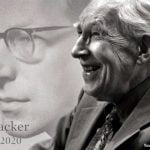

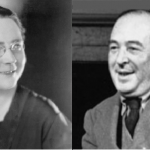
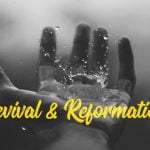



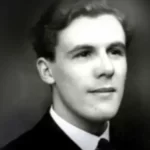
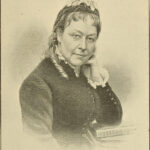


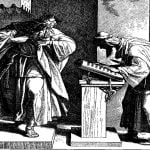
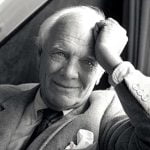


I’ve seen some of this occur in Pentecostal/Charismatic churches today, but never Baptist/Presbyterian/Emergent/Anglican etc. Why do you think that happens? The non-Charismatic churches are supposed to have the more correct doctrine after all…
Nathan Keen
Thanks Nathan
I am sure that there are many such churches around, even in non-charismatic circles, but they may be in the minority I suspect.
Bill Muehlenberg, CultureWatch
Nathan,
The growth of the Pentecostal and Charismatic movement around the world today is mainly attributed to the transfers of people from non charismatic churches to charismatic churches. Much earlier on, it was the Baptists, Presbyterians, Methodists, Brethen, OMF etc that send missionaries around the world and established churches in lands that have previously never heard the gospel of Jesus Christ. They reached out and brought the salvation of Jesus Christ to thousands and established churches where previously there were none. China is a very good example. They were simply obedient to His command in Mt 28;16-20, the great commission. They trusted God who said ‘and lo I am with you even to the ends of the age.’ That is the real history on the spread of the gospel around the world. We must thank God for these missionaries, who gave up comfort and made sacrifices for the sake of the gospel, for without them many around the world including me would still be a heathen.
The modern pentecostal and charismatic movement grew from these established churches around the world, particularly when the WOF teachings of Kenneth Hagin became popular after it was endorsed by influential leaders like Oral Roberts. So there was a mass exodus in the 70s, 80s & 90s from the established churches to the charismatic and pentecostal churches. They benefitted from the fruits of the toils and faith of early non charismatic missionaries. So the charismatic had a very good start, with an almost instant critical mass of people from the beginning and so they grew rapidly around the world within a short space of time. Why people leave to go to charismatic churches is another topic for discussion.
Barry Koh
Bill in a very old book THE TRAVELLER’S GUIDE – from hell to heaven, there is a story entitled THE ARTIST AND THE GYPSY GIRL, which tells the story of Stenberg, an artist in Dresden or Leipzig, who was comissioned by the Cathedral to make a altarpiece around the crucifixion. He had also painted a gypsy girl whilst halfway through the work on the altarpiece, and she saw it, and because of her questioning, Steneberg eventually became a Christian. He painted his masterpiece – a Crucifixion painting – and placing it in a gallery, Stenberg would watch people’s reactions. The gypsy girl viewed it there and also became a Christian. Years later, the story says “long after the artist and the gypsy girl met in the land above” – a young nobleman paid a visit to the art gallery and spent a long time viewing the picture, weeping and distressed. He turned his back on the high life and went back to his estate, and the rest is history as the nobleman was Zindendorf. What made him weep? It may have been the Crucifixion scene but also the words Stenberg painted underneath:
ALL THIS I DID FOR THEE
WHAT HAST THOU DONE FOR ME?
The picture was apparently destroyed in a fire that swept the Gallery.
Wayne Pelling
Thanks Wayne
Yes that visit to the Dusseldorf art gallery changed his life. He stood in front of the painting “Ecce Homo” (Pilate’s words to the crowd, “Behold the man”) and its caption for over an hour. He knew that the question was aimed at him, and that he had to respond.
All of us need to respond to that question as well:
“This I have done for you, what will you do for me?”
Bill Muehlenberg, CultureWatch
There are many that sit in the Pentecostal pews that I have observed over 20 years, and mesmorized with the hype they still get the message that Jesus said ‘go’. However sadly pews, are like patients waiting to go to theatre; they get an injection of ‘you must work to serve those in the building talk; and when individuals want to talk about God calling them to be missionaries, the response is not ‘wow, just go’ rather an anxious ‘no, just stay, as the local need is great.’ Pews were never meant to house believers long term, yet people boast of longevity in the pew. From day one each time I saw individuals excited to go, their leaders tried to talk them out of it. One lass at bible college left for China as she was a teacher and the local church advised us she was in error. Famous misshos like C.T.Studd and Hudson taylor were not given the green go ahead, and neither do our called ones today.
The day they do away with pews, and sit face to face, is the day we might have some heart to heart gospel sharing and the confidence to ‘go, encouraged, in his name!
Ilona Sturla
PS: I should have said we get a bit anaethetized in the pews and the call within us cools.
Ilona Sturla
G’day Bill,
Can you tell me exactly where you got the information about the connection between Stenburg’s painting and Zinzendorf? I know it’s in ‘The Traveller’s Guide’ but I wasn’t able to verify the connection from other references to Zinzendorf. Thanks.
Your account of the two young men moved me to tears. It has cost me so little to serve Christ.
Andrew Campbell
Was it not a Moravian meeting at Aldersgate that John and Charles Wesley had their hearts warmed and enlightened by the Grace of God?
The spirit ignited a flame that then burned throughout the English speaking world – we still sing Charles hymns today as a consequence of young Nicholas’s turning towards his Lord.
Stephen White
Thanks Bill.
There are three points I would wish to raise:
1. No praise can be too high for these dedicated Christians who sold themselves completely for the Lord Jesus. You have not even begun to outline the effect they had on the early Methodists and John and Charles Wesley in particular. John’s “heart-warming experience” was at a Moravian meeting. Although I believe that the Evangelical Revival was essentially a revival of Puritanism, in many ways the Moravians influenced the revival of the C18th.
2. Moravianism made its way to early Australia and pioneered mission work among both the early colonists and selectors, and among the Aboriginals. One of the early governors of Victoria, Charles Latrobe, was a dedicated Moravian and did much to sponsor missions in those early days. Until relatively recently (the 1950s I think) there were Moravian meeting houses here in Victoria.
3. There were defects in their theology. Because of Zinzendorf’s experience in the art gallery his followers became obsessed with meditating on “the blood and wounds” of Christ. The evangelist George Whitefield eventually wrote an open letter to them criticising them for these and other deviations, and calling them back to orthodoxy. You can read about this in A. Dallimore’s book on Whitefield, Vol.2, Banner of Truth Trust, 1980, ch.22.
Murray R. Adamthwaite
Thanks Andrew
If you go to any site dedicated to Zinzendorf you will get the info on the artist. Wayne had the wrong artist; it was actually Domenico Feti. I write up Zinzendorf’s visit to the Dusseldorf art gallery and his encounter with the painting here: https://billmuehlenberg.com/2010/04/30/l%E2%80%99oreal-christianity/
Bill Muehlenberg, CultureWatch
Thanks Stephen
Yes you are quite right. Wesley was in despair at the time over his failed campaign in Georgia, but at the Moravian meeting in London, where Luther’s preface to the Book of Romans was read, he had his life-changing experience of which he later said, “I felt my heart strangely warmed”.
Bill Muehlenberg, CultureWatch
Thanks Murray
Yes the Moravians have had a huge impact on global Christianity. And yes I did mention in my article his unbiblical fixation with the physical wounds of Christ.
Bill Muehlenberg, CultureWatch
Thanks Bill for letting me know that the artist was Feti and not Stenberg, which means the TRAVELLERS GUIDE got it wrong and it was published 100 years after Zinzendorf. I also think it appeared in an Australian version called THE BUSHMAN’S GUIDE or something to that affect.
Wayne Pelling